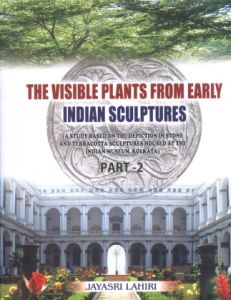 Contents:
Contents: Part I: Acknowledgements. Preface. Introduction. I. Historical context of some select sculptures from the Indian Museum. II. Plant profile in some early and medieval Indian Sanskrit and Pali texts: 1. Plants in Vedic Literature. 2. Plants and trees in the Pali Buddhist Literature. 3. The Arthasastra on Flora. 4. The Epics on the plant world. 5. Plants and trees in the works of Kalidasa. 6. Amarkosa on Vrksavarga. 6. Amarkosa on Vrksavarga. 7. Plants and trees in the Brhatsamhita of Varahamihira. 8. Plants in Banabhatta’s Harsacarita and Kadambari. 9. Evidence of the Ramacaritam of Sandhyakaranandin. 10. Symbolic value of the plant world in the eyes of literati and artists. III. Early Indian tradition of herbal medicine in Carakasamhita and Susrutasamhita: 1. Origin of Ayurveda. 2. Date and authorship of the Carakasamhita and Susrutasamhita. 3. Herbal medicine as mentioned in the Carakasamhita. 4. Herbal medicine as mentioned in the Susrutasamhita. 5. Susruta’s classification of drugs according to their therapeutic properties.
Part II: IV. Identification of plants depicted in the sculptures of the Indian Museum. V. Scientific analysis of the identified plants. VI. Continuity of tradition: observations on contemporary use of some of the identified plants in herbal medicine and environment. VII. Annexures: i. List of plants depicted in the sculptures of the Indian Museum. ii. List of identified plants throwing light on their habitats. VIII. Bibliography. IX. Index.
The book presented by Dr. Smt. Jayasri Lahiri on the study of visible plants in the sculptures of the Indian Museum has been quite interesting, informative and befitting to the age when the world seems to fall a prey to the pollution caused by constant growth of population, rapid urbanization and industrialization, annihilation of forests and trees, production and use of deadly weapons, etc. Actually, the world is at present facing crisis after crisis for giving its people a healthy atmosphere to live like a free bird flying in the sky where there are no particles of dirt and dust. But there is a light of hope for the people of the earth to live in a good and healthy atmosphere if they can love and worship plants like the people of ancient India, Dr. Smt. Lahiri explains this very truth in chapters after chapters, in pages after pages with reference to the worship and love of plants as found in different schools of sculptures, tallying simultaneously with those as mentioned in different texts of ancient Indian literature.
Regards and love for plants and trees were in a high order in ancient India. The author has discussed this in her book in such a lucid manner, quoting passages after passages from the early Indian texts, that this will induce the modern Indian people to follow the ancient Indian high ideal of treating plants and trees as their mothers, sisters, children and friends, and thus they will be inspired to abstain from destruction of forests and trees.
In her observation, the author says that the ancient Indian tradition continues to the modern period. Modern Indian people are trying to follow the ancient Indian principles of utilizing plants not only protecting environment but also in protecting and promoting health by emphasizing and revitalizing Ayurvedic System of Medicine of the Vedic period and also of the period of Carakasamhita and Susrutasamhita. Dr. Smt. Lahiri’s presentation of mediaeval medical commentary Rajanighantu in connection with the scientific analysis of plants and trees has been excellent.
